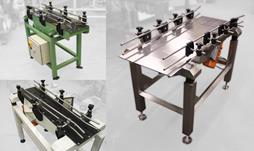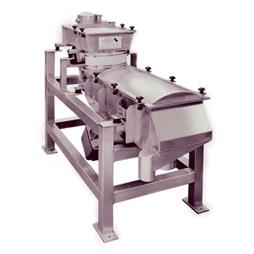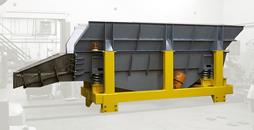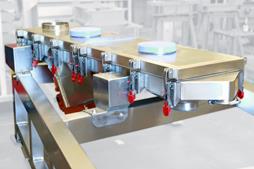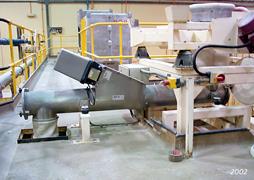Packing production lines benefit from Compaction Feeder Unit that compacts and feeds containers
29-05-2018
We have recently been approached by a number of companies looking to compact materials within a container – in a box, or a bag – whilst feeding onto the next stage of a production line. Despite the different materials and industries, the aims and issues surrounding these enquiries were very similar, and a compaction feeder unit provided the solution.
The aims are most often to fill a container to its optimum level, either ensuring that their customers receive the correct amount of material in a container of bought produce, or for efficient use of storage internally. Their main issues were that machine-packed material does not often fill efficiently out at the bottom of the box, and instead fills parts on top of one another causing blockages at the sealer when the box cannot be shut or sealed. Similar issues were also found in sealing bags, with the additional problem that when bags fill inefficiently and air gaps form between particles or products, bags become very difficult to stack and can pose as a health and safety issue when stored in bulk.
A vibratory table is one of the most recognised solutions to help material compact and nest closely together in order to reach capacity volume within a container. However, to use a vibrating table in this instance would mean moving the container from the packing line, onto the table, and then back onto the sealing machine - interfering with production line flow and efficiency.
A compaction feeder unit, however, compacts material in a container whilst feeding it along a length and onto the next process. Designed to compact the specific material within an application, and often to fit a pre-existing production line, a compaction feeder maintains production efficiency by working seamlessly within the line. Moving the box or bag along its length, the material within compacts down so that the box or bag can be sealed. Air gaps are removed from the material, meaning that when bags are sealed they are more stable and secure. A compaction feeder can also be use earlier in the line, compacting material so that more can be added to reach the optimum level within the container, in a similar way that a vibrating table may be used on a filling station.
A compacting feeder can be designed to suit large or small containers, and can be manufactured in carbon or full food quality stainless structure for hygiene sensitive areas such as food or pharmaceutical lines. Guide rails or liners can be used in order to perfectly position the container onto the next process, and the length of the unit is usually just over a meter long (though will be longer if the material is particularly tricky to compact, or the production line requires a longer length).
If you would like to know more about compaction feeder units, or whether they could help your application, please don’t hesitate to get in touch.

